Article's Content
Creating a company and taking it public is not an easy task. Yes, there are companies like Zoom that became successful by accident, taking advantage of a global pandemic.
But pandemics don’t happen every year. And so, to be successful, some companies spend many years working, creating multiple services, trying to find product-market fit before reaching a point where they no longer need to establish their dominance. This is the case with Freshworks.
You may know Freshworks for repeatedly trolling its competitor Salesforce or going public a few months ago, raising $1.03 billion and becoming the first Indian technology SaaS company listed on Nasdaq.
But that’s not the most impressive part of their success.
Prior to going public, the company doubled its overall organic traffic, going from 140k sessions to over 280k–in just three months.
Yes, you read that correctly. DOUBLED their organic traffic in just THREE months.
How did they do it?
You have to read on to find out.
Sneak peek: almost any brand can copy their tactics.
Let’s get started.
How These Simple Pages Target 40k+ High Difficulty Keywords
Just for some context, the pages in question are not parent landing pages that have separate content clusters. These pages, 400 or so in total, are subdirectories of the Freshdesk Contact Center page, which is the Freshworks storefront page that promotes the company’s phone system services.


According to Ahrefs, these 400 or so pages target more than 43k keywords and generate traffic of 108k visitors per month, which is about 40% of the organic traffic of the “freshworks.com” website itself.


However, this is not the most impressive fact about these pages…
These pages have doubled their traffic in just three months – from mid-April to July.
Surprisingly, the Freshdesk Contact Center page that leads this content cluster targets only 200 keywords and generates a mere 470 visitors per month.


So, how does Freshworks manage to get subdirectories to accomplish such a feat?
Well, it all started around mid-April of 2021 when they decided to go public on the US stock market. Rumors that Freshworks planned to go public began to circulate between March and April of 2021.
At the time, the Freshworks monthly organic traffic clocked in at 146,000, and it remained pretty constant until July of 2021.


As for the subdirectories it housed, their traffic led to around 45k sessions, and they were ranking on approximately 12k keywords.
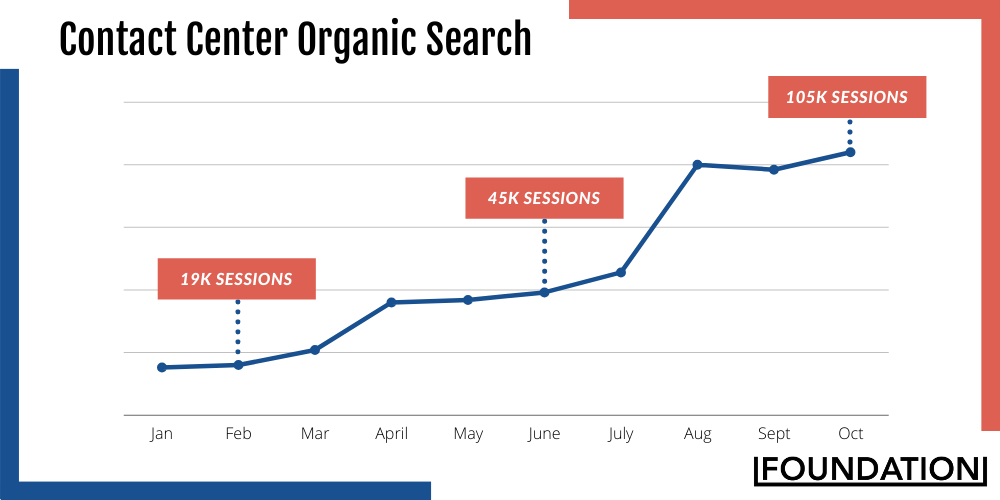

What caused this jump of about 200% in just three months? Let’s have fun comparing before and after.
Before optimizing the pages
Prior to this SEO feat, Freshworks’ website pages were poorly optimized and organized. For instance, the page targeting the keyword “US area codes” jumped from ranking for about 6k keywords to 24k keywords.
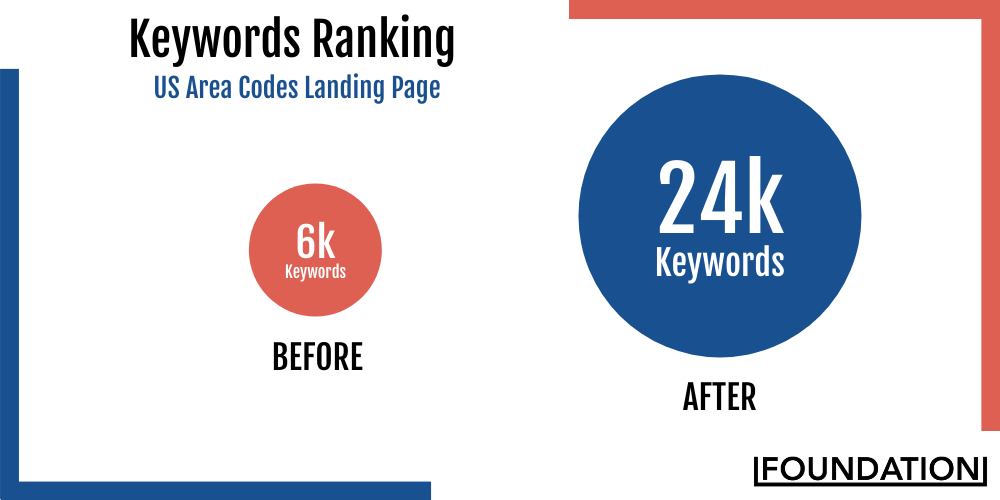

If you look at the Internet Time Machine, you won’t notice much difference in the page structure before and after their IPO. As shown in the image below, you have to compare their source codes to observe the drastic changes. (Keep reading to understand better.)
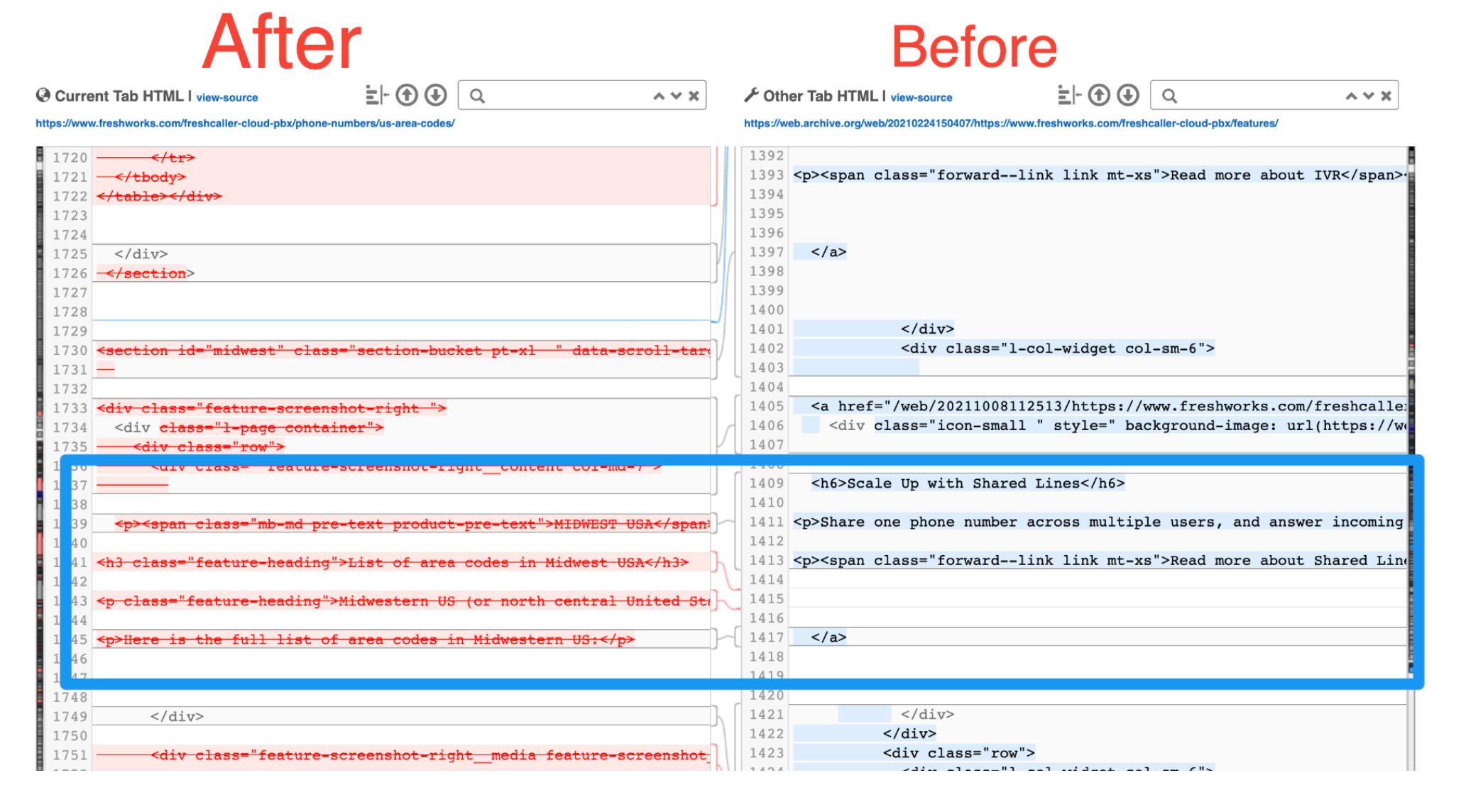

1. The page’s metadata has been removed and changed.
In March, this is what an H6 on the page looked like.


As you can see, this section does not contain any keywords related to “US phone number” or “US area code.” For a keyword with a 66 difficulty grade, which is hard, it’s no wonder this page is not doing well.
As of July, the page was optimized, and this entire section (the H6 above) was transformed.
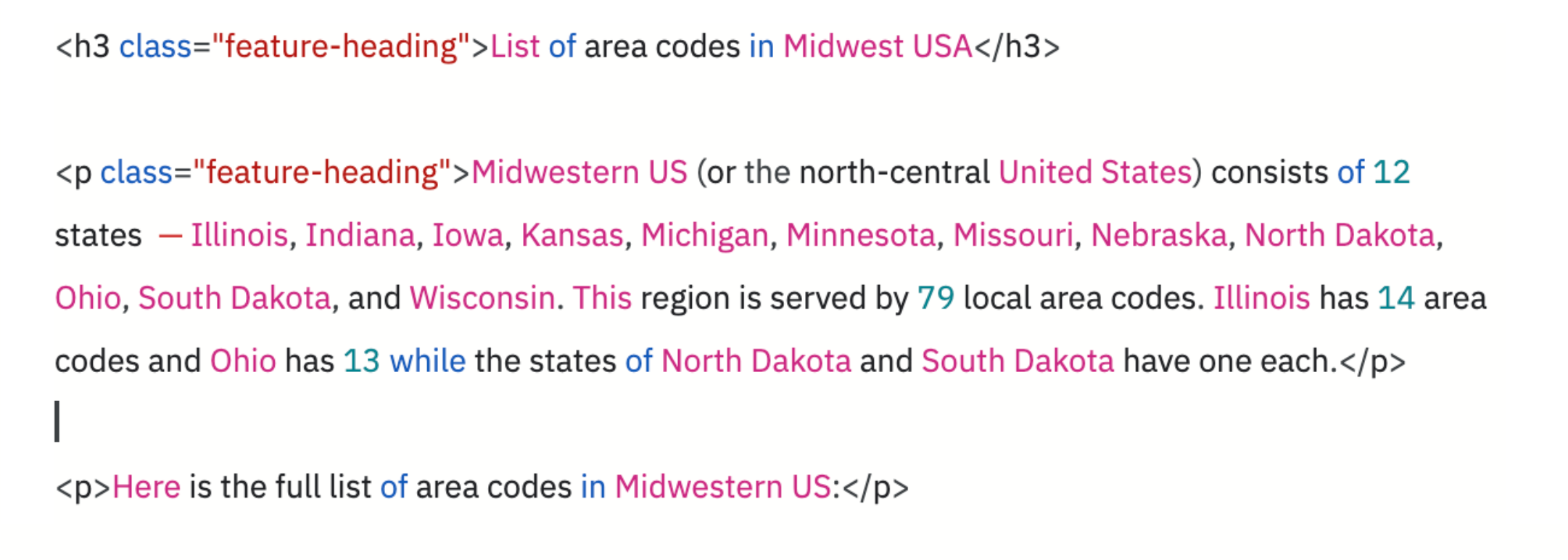

As you can see, the previous H6 turned into H3, and the content completely changed. This time, keywords like “area codes in the Midwest USA,” “local area codes,” and even state names were added. This made the page rank on the first page of Google, and the number of keywords it ranks for skyrocketed almost immediately.
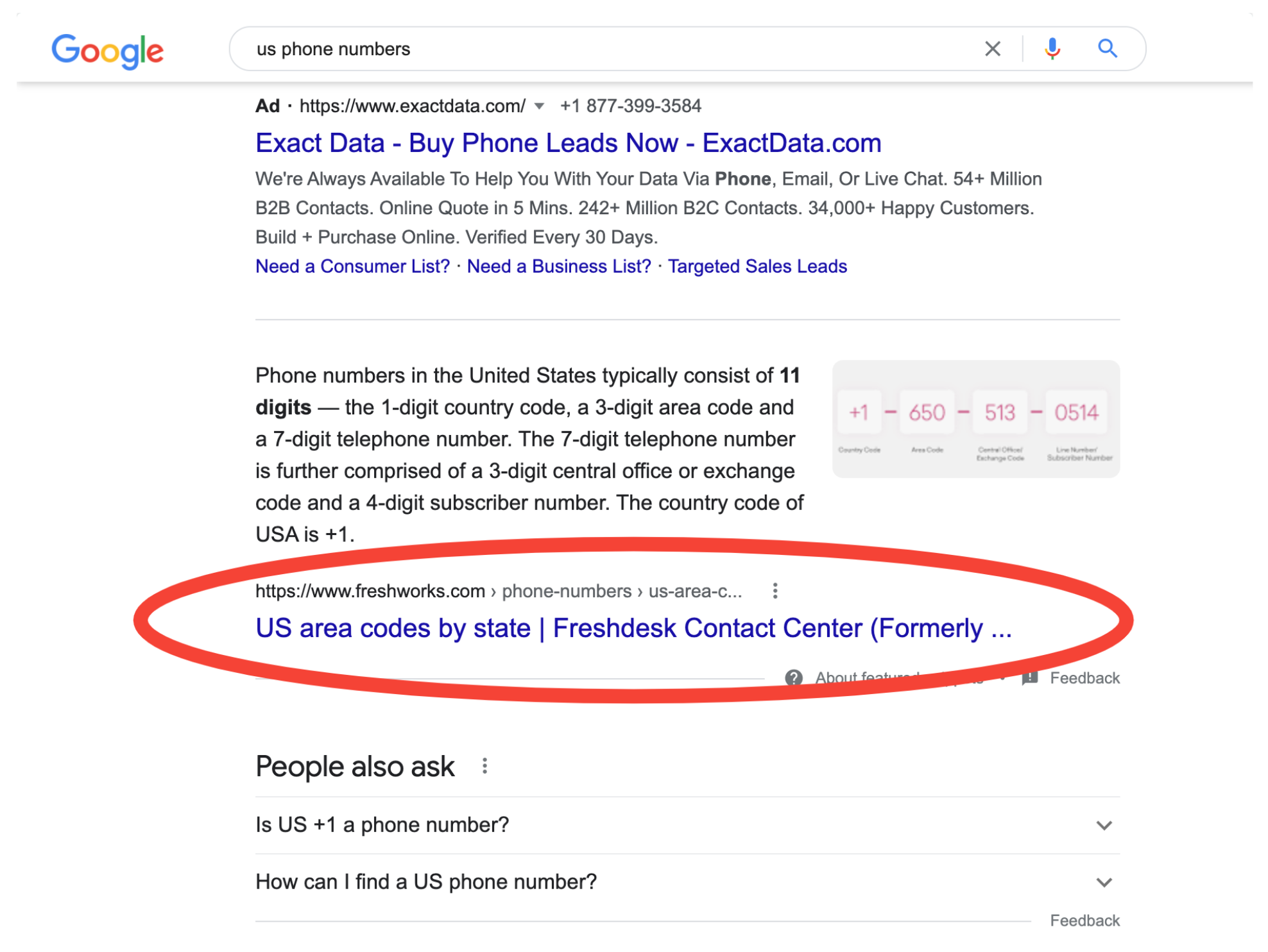

2. The page structure has been improved.
When you analyze the structure of the page that targets keywords related to “area codes in the US,” you will notice that in March, this page had no H3, H4, or H5.
The structure went like this: H1, H2, and then H6.
We all know that Google crawls and tries to understand site structures thanks to the way titles and subheadings are set. And that’s where Freshworks failed back then.
This structural problem did not allow the “US area code” page to perform at 100% of its potential.
In July, when the page was updated, it contained H1, H2s, H3s, H4s, H5s, and H6s. As you know, this is the best way to organize a page and optimize it to attract traffic.
Most subdirectories on the Freshdesk Contact Center page from March to April were just as jumbled as the US area codes page. It was only after optimizing these pages that traffic doubled.
And it had a significant impact on the site’s SEO results.
The days after optimization
By June, Freshworks had already optimized a large number of its pages. Also, they created a handful of new pages.
For example, the page that ranks for the keyword “toll-free number” did not exist.
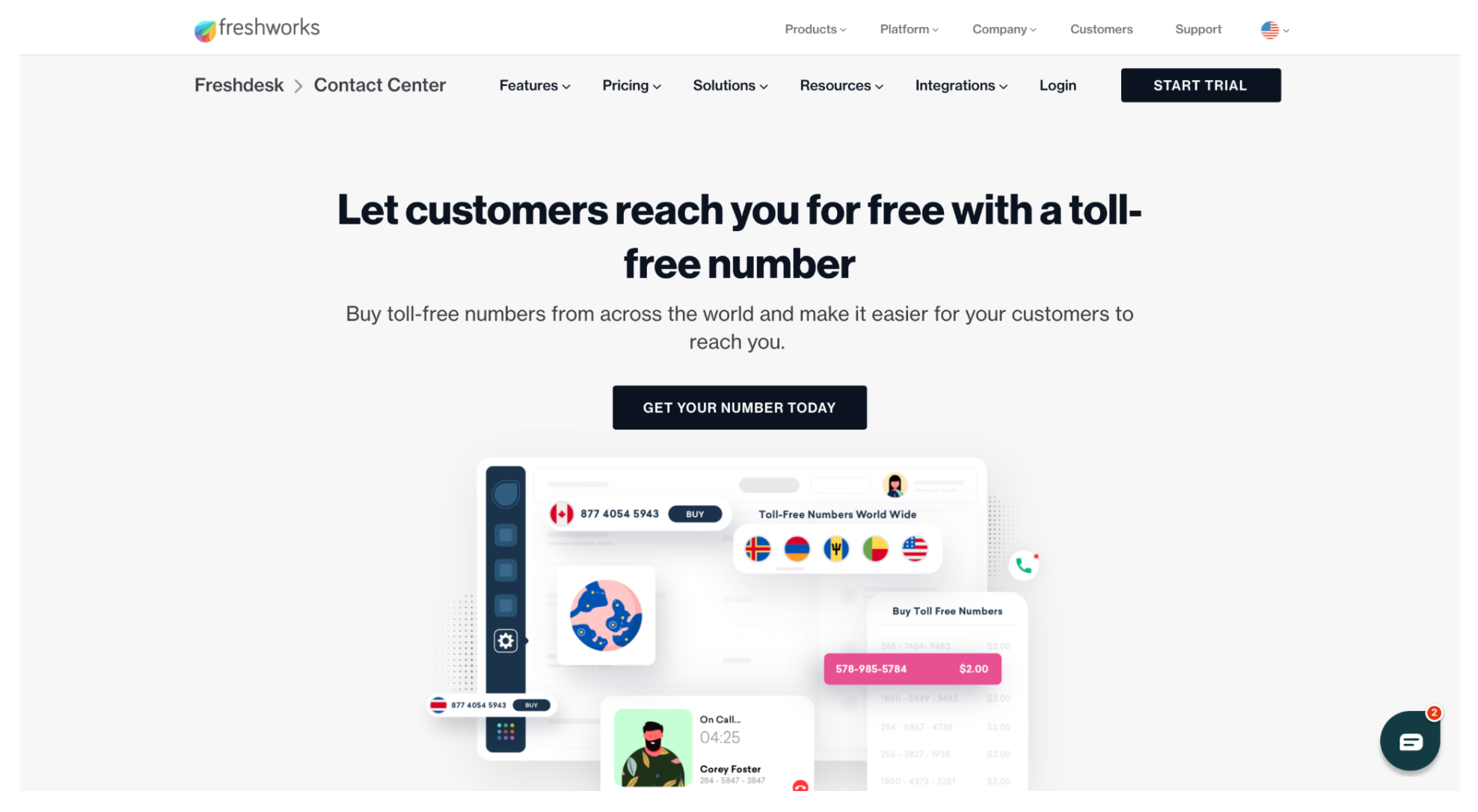

Prior to creating the new pages, the main Freshdesk Contact Center page was stuffed with thousands of other keywords, making it difficult for Google’s robot to crawl and understand it. Ahrefs also shows that this page targeted a vague audience (USA, Canada, India, etc.).
Since the new page targeting the keyword “toll-free number” was added in July, the traffic has risen steadily to more than 3k visitors per month.
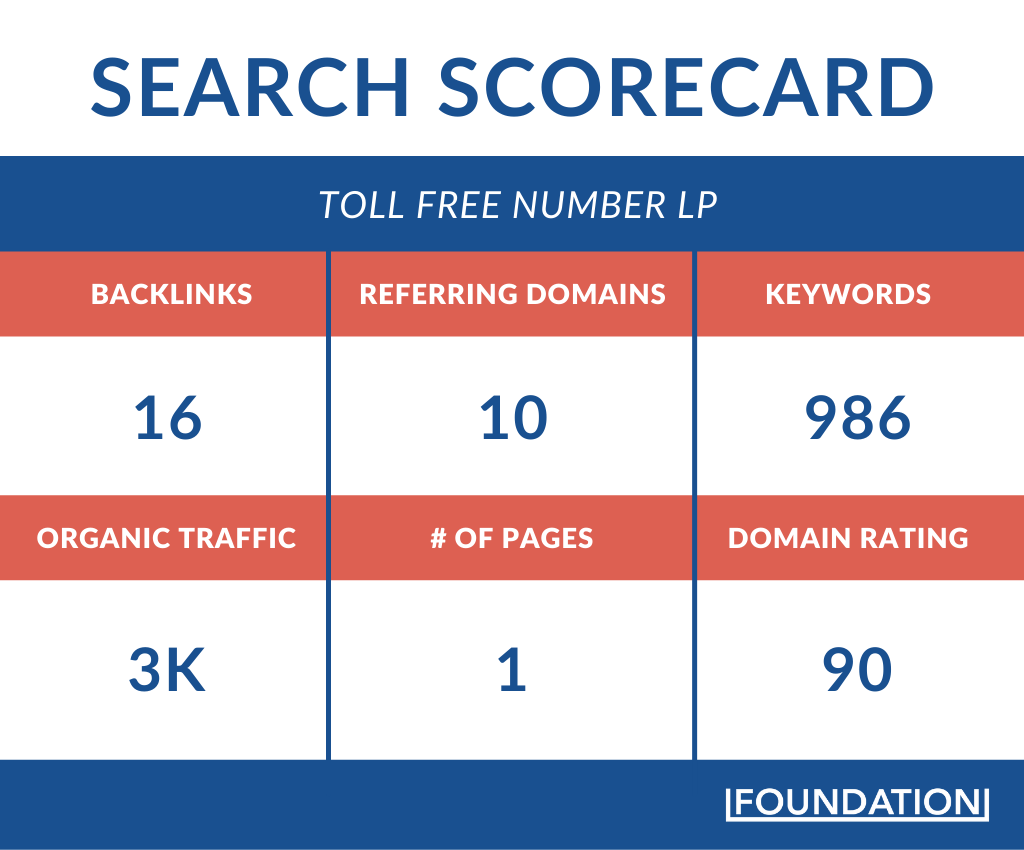

As for the existing pages that have been optimized, Freshworks chose to focus on important keywords. These are keywords that not only meet search intent but also generate revenue.
For instance, since Freshdesk Contact Center offers phone services, Freshworks could have optimized these pages to rank for “VoIP service” or even “Business phone number.” Since these keywords are volume-oriented, and the impact on conversion and revenue is not significant, Freshworks did not optimize for them.
Here are some of the revenue-generating keywords that Freshworks targets with subdirectories: “443 area code,” “617 area code,” and “907 area code.”
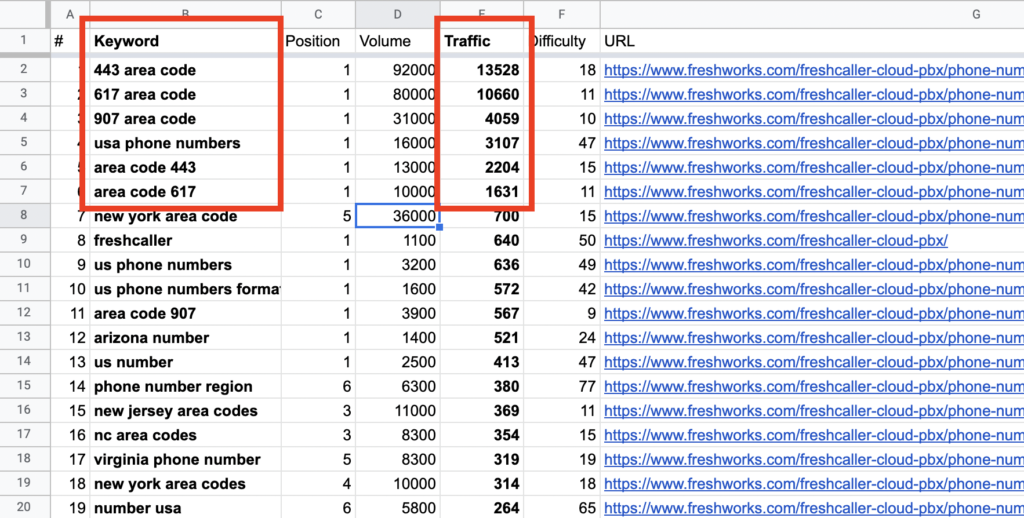

As you may have noticed, Freshworks targets states within the US, and each subdirectory is geared toward keywords containing the corresponding area codes to the target state.
For example, in Maryland, there are 5 area codes (301, 420, 240, 443, 667). So, all these keywords point to the same page. The same rule applies to all keywords targeting area codes in the state of Alabama.


When I analyzed this strategy’s impact on the SEO of the subdirectories, I realized that the 5 keywords that generate the most traffic are pointing to area codes. And these five represent 11% of the monthly organic traffic of their entire website.


You are probably wondering why these area codes and why these states were chosen.
First of all, it is pertinent to note that one of the subdirectories is the page targeting “US area codes.” And using this page, Freshworks targets all areas within the US, from east to west, from north to south.
This page alone attracts about 28k visitors per month. That is more than 100x the Freshdesk Contact Center page traffic and 28,000x the traffic of the Freshworks main landing page. (The main landing page has basically no organic traffic.)


Yet, this page is just a subdirectory.
The SEO work they did on that page is a masterpiece. It sits on top of 11.5k keywords, and many of these keywords have difficulties ranging from 50 to 98.
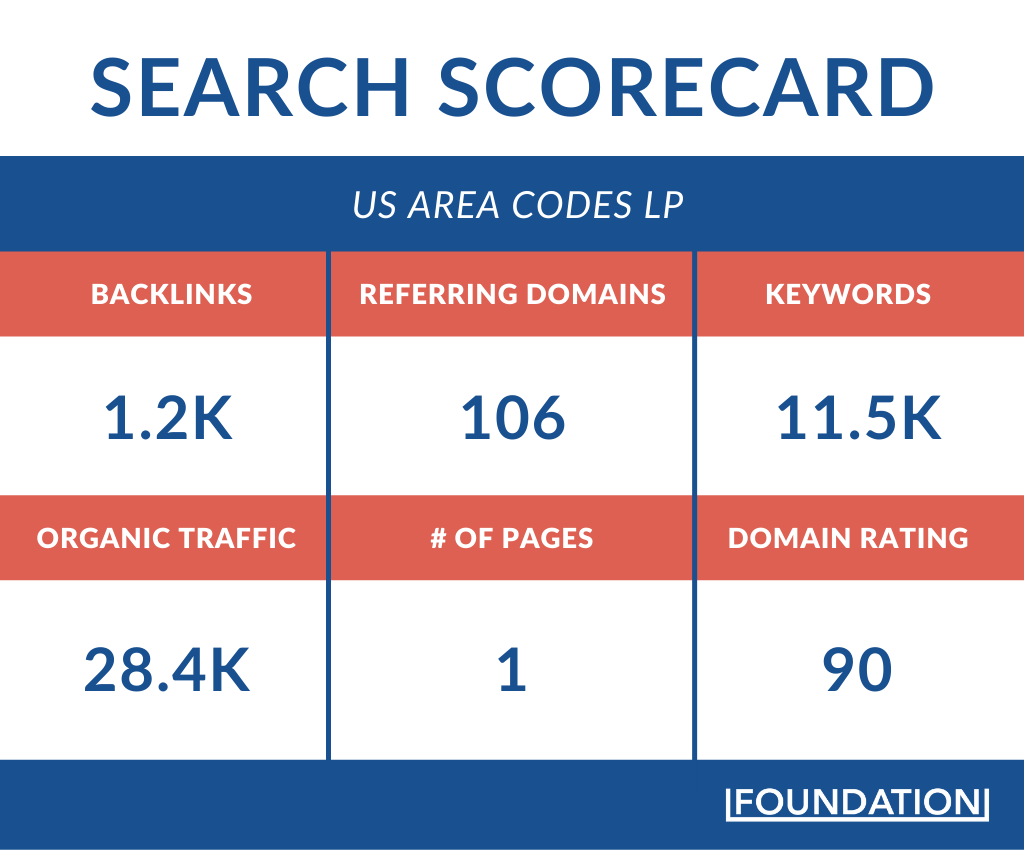

This page is meticulously optimized to rank for the majority of area codes covering the United States. It features tables, images, FAQs, and a whole bunch of on-page SEO elements. As a result, for most of the keywords it targets, it grabs the Featured Snippet.
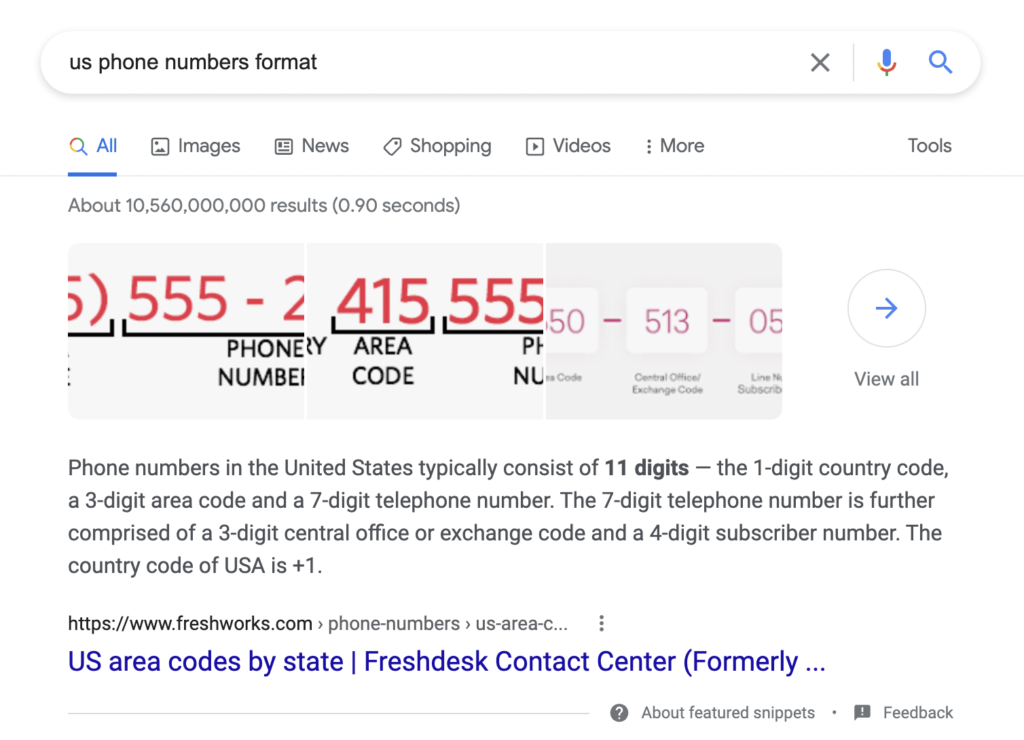

Even better, this page beats the vast majority of Freshworks’ competitors as well as other popular sites (TripAdvisor, RingCentral, Wikipedia, Virtual Phone, etc.) for the keywords it targets.
For a page that ranks above websites of this caliber, Freshworks brought out its artillery.
Then, to avoid relying on this page only, Freshworks created other subdomains that cover several states and cities like Maryland, New York, Boston, and more. If there’s a popular area code, Freshworks targets it.
Why Focus On US Area Codes?
As you may have noticed, a lot of these pages are targeting US keywords. And here you ask, why is an Indian company targeting a completely non-Asian audience?
Freshworks targets areas with high business potential. For instance, Maryland is home to some of the biggest brands in the US, including Lockheed Martin, which has over 105k employees, Under Armour, which is popular worldwide, and Marriott International, which has more than 170k workers.
There are about a dozen more companies with the same stature located there and these companies generate billions of dollars of revenue per year.
As for New York, it is home to the largest companies in the world. Think of IBM, JP Morgan, Citigroup, Verizon, Deloitte – companies that employ hundreds of thousands of people.
Consider how many sales reps these companies have, and evaluate the growing need for modern phone system technology. Companies of this caliber wouldn’t like their sales team to lug around old phones and SIM cards.
And a startup in India or Canada can sign up for the Freshdesk Contact Center phone number service and get the Alaska area code number. That will make running and growing their business in the area easier.
In a nutshell, those are the changes and optimizations that Freshworks implemented to double traffic within three months. Impressive, isn’t it?
But, Freshworks didn’t stop there. They implemented an on-page SEO strategy that helps subdirectories link to each other and be in search engines’ good graces.
How Are These 400+ Pages Organized?
Let’s be honest. It’s easy to say that Freshworks has optimized hundreds of subdirectories and has doubled traffic as a result. But in reality, this is easier said than done.
Without a proper internal linking strategy, Freshworks’ optimization work would have only gotten crickets as Google would have had a hard time understanding the site’s architecture.
That’s why Freshworks implemented an internal linking strategy to create a correlation between its parent landing pages and its subdirectories.
For example, when you look at the Freshdesk Contact Center page, you see that it links to more than seven pages, including the US Phone Numbers page.


The page that targets US phone numbers links to more than a dozen pages. It also links subdirectories that target keywords related to state area codes (Maryland, New York, etc.).
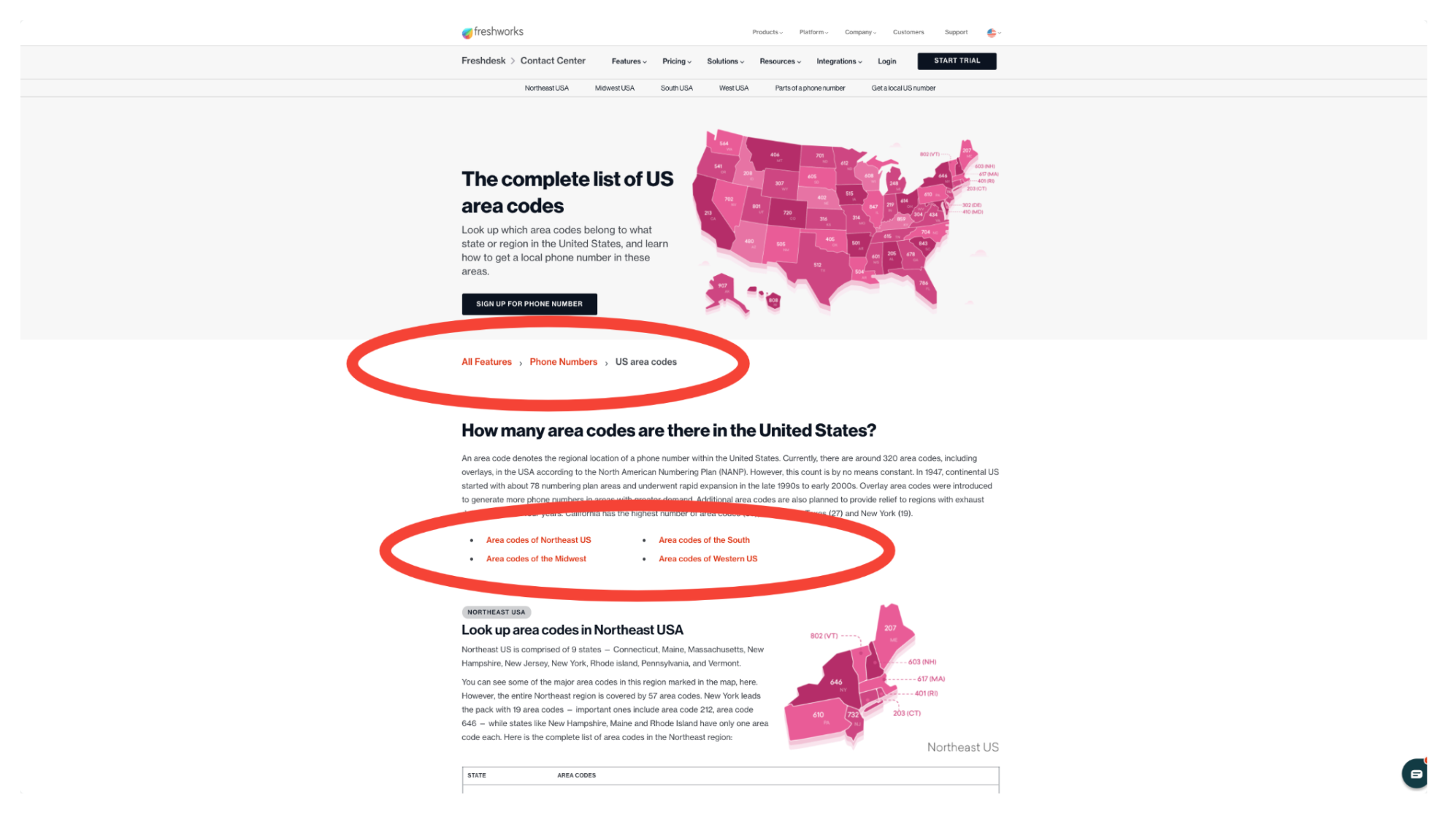

Besides, it also links to subdirectories that directly target area codes of cities covered by each state.
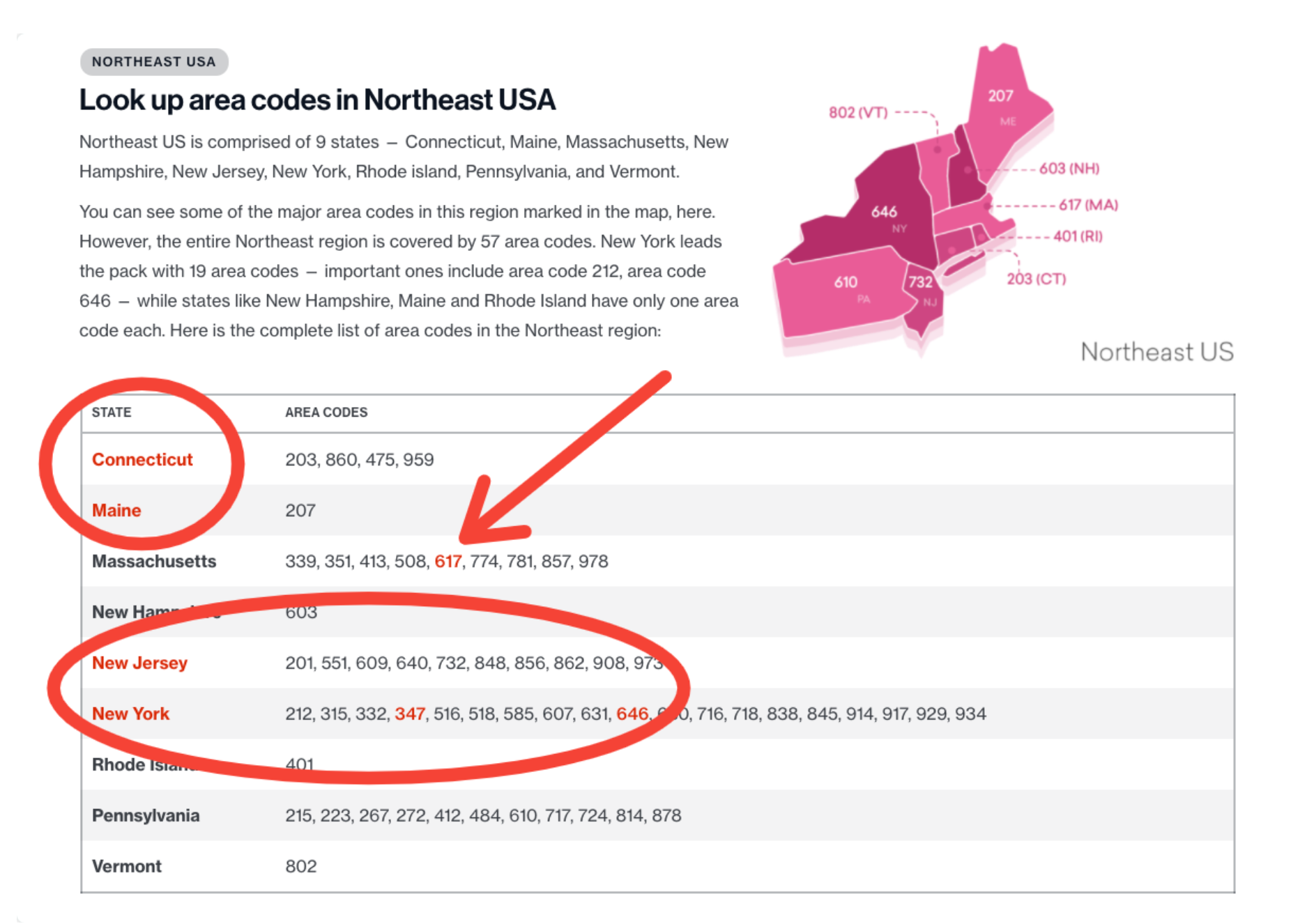

This kind of cross-linking indicates to Google that these are the most important pages of the Freshworks website. And it also makes it easier for search engine robots to crawl their site and comprehend it.
However, when you do it right, it looks like this.
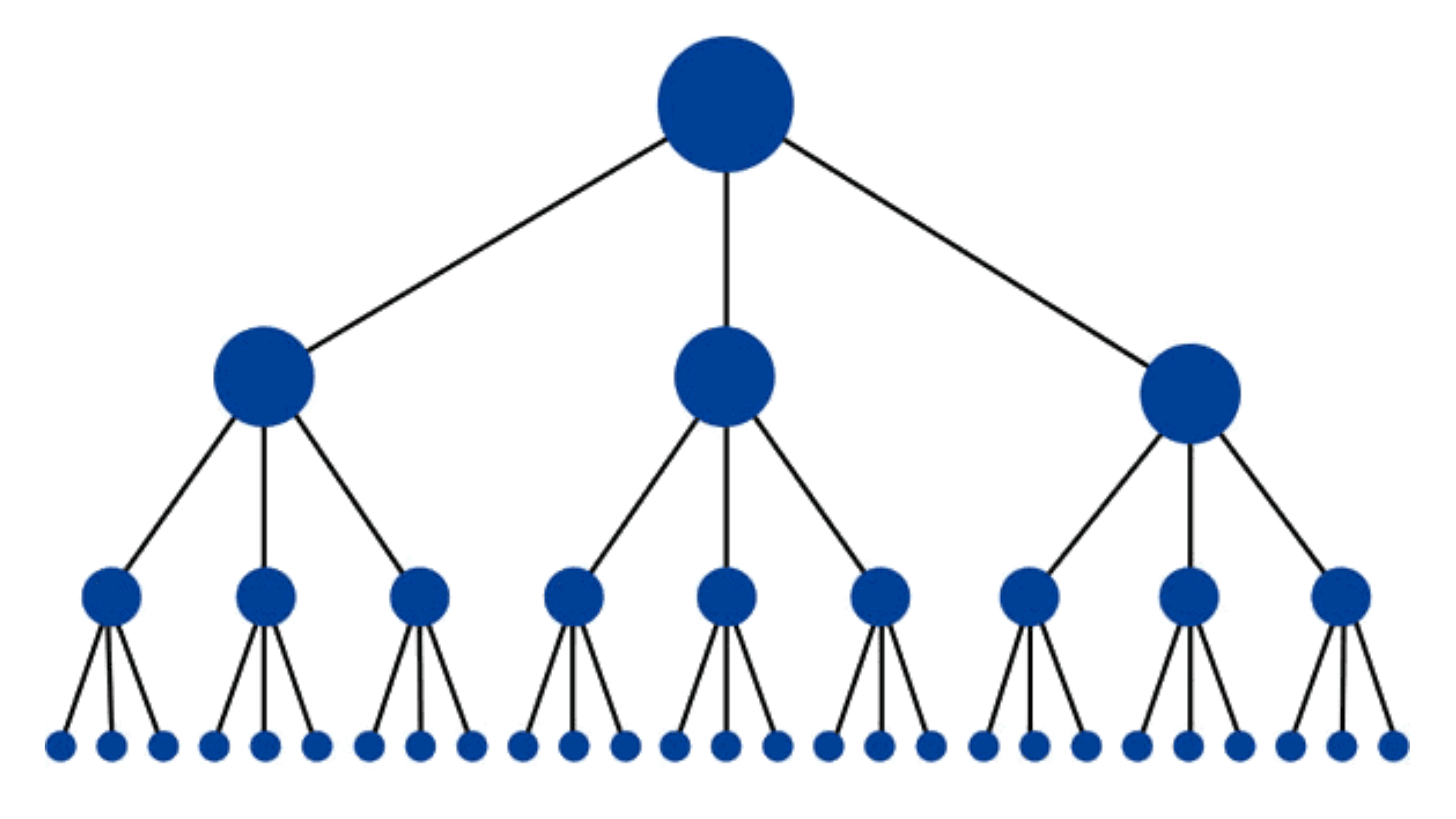

In addition to extensive cross-linking, Freshworks has also templatized its landing pages, making it easy to create hundreds of subdirectories at scale.
Let’s take, for example, the page that targets keywords related to the Maryland state area codes. You can see that it contains images, FAQs, a table, and specific metadata.
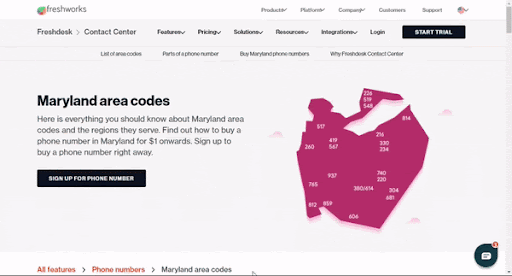

This allows Freshworks to maximize its chances of getting Featured Snippets for each page. Here is an example of the page that targets Maryland area codes:
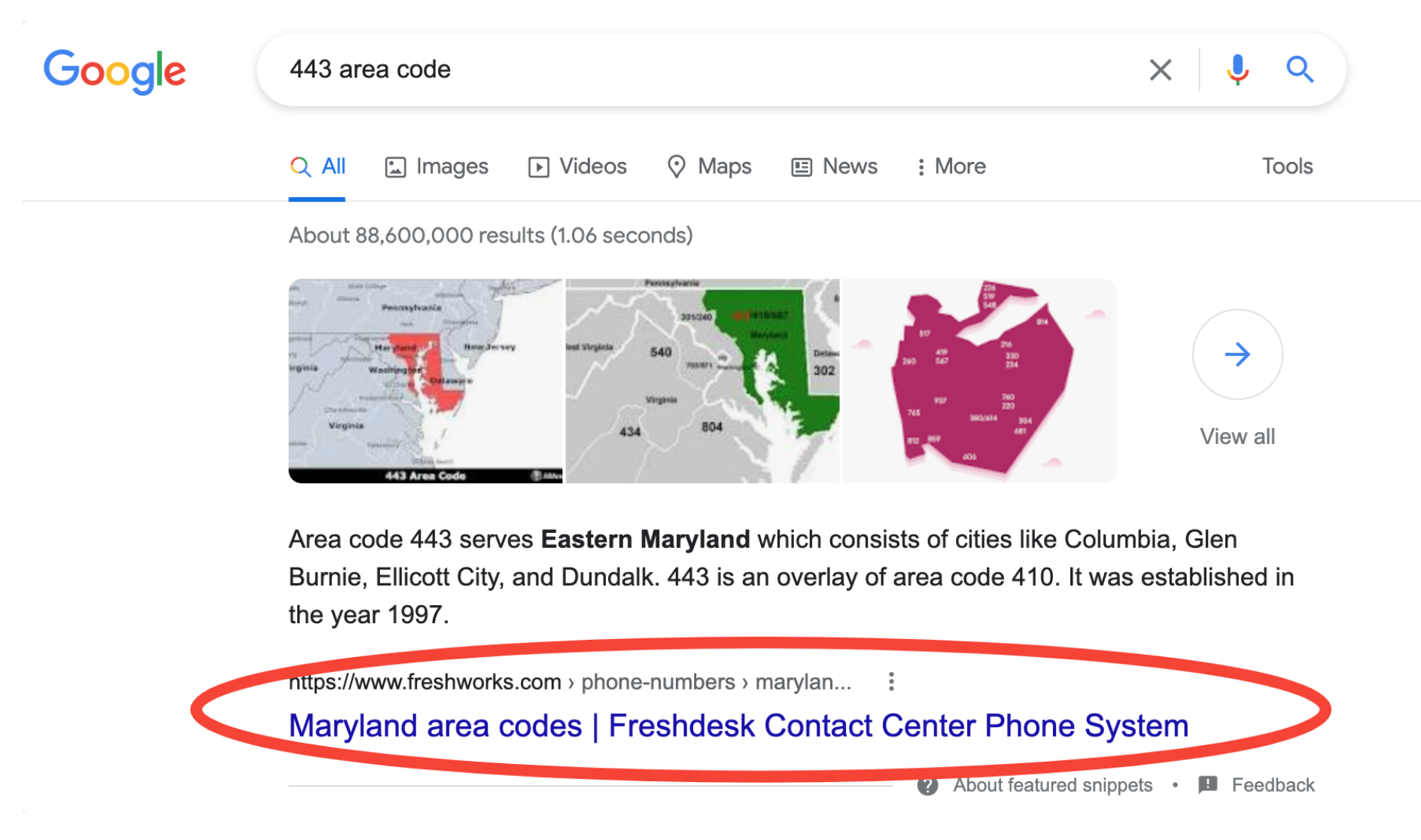

This is not the only page structured this way; there are more than a hundred with the same architecture.
Here is an example of a page that targets area codes in the Boston area:


For example, here is the template for pages that target states like Maryland and Alaska:


Here is a page that targets area codes in Maryland:
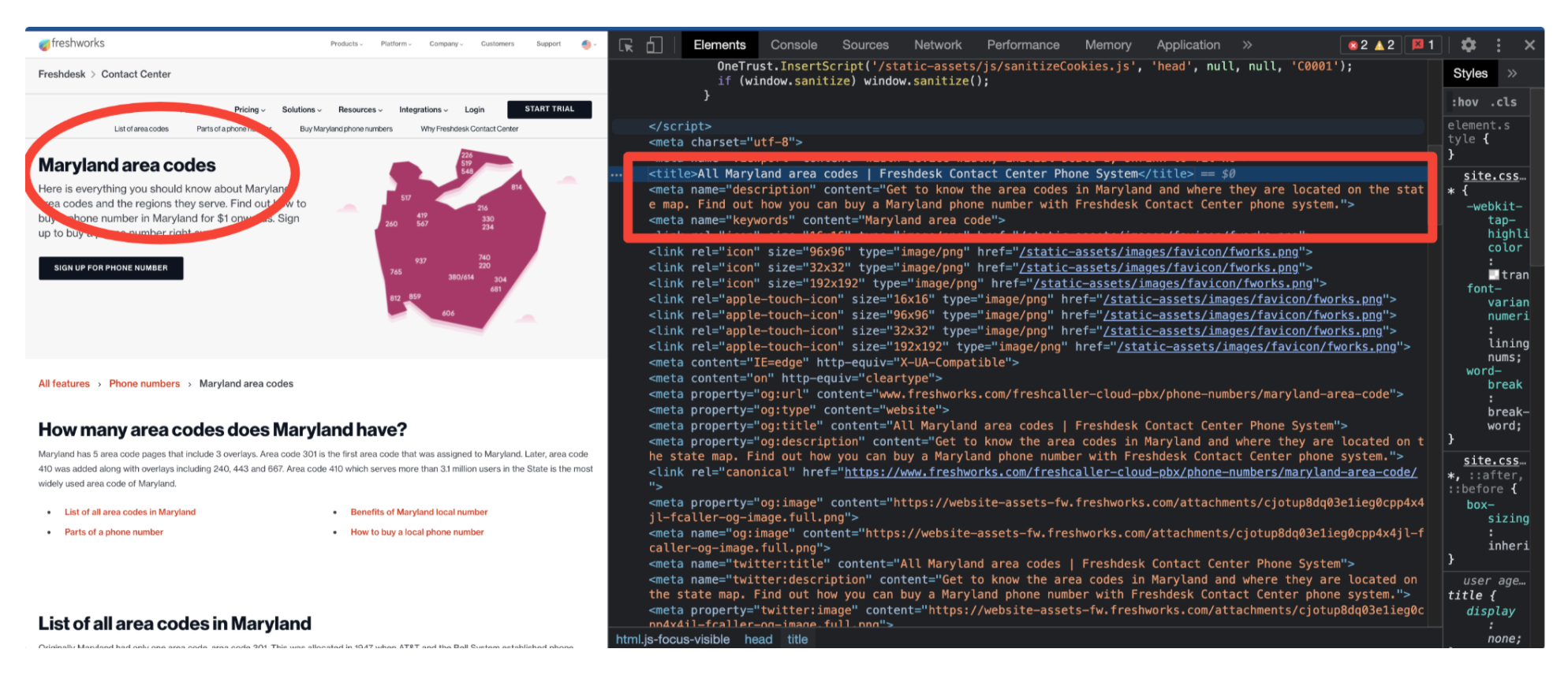

And here is the metadata of a page that targets area codes in Alaska:
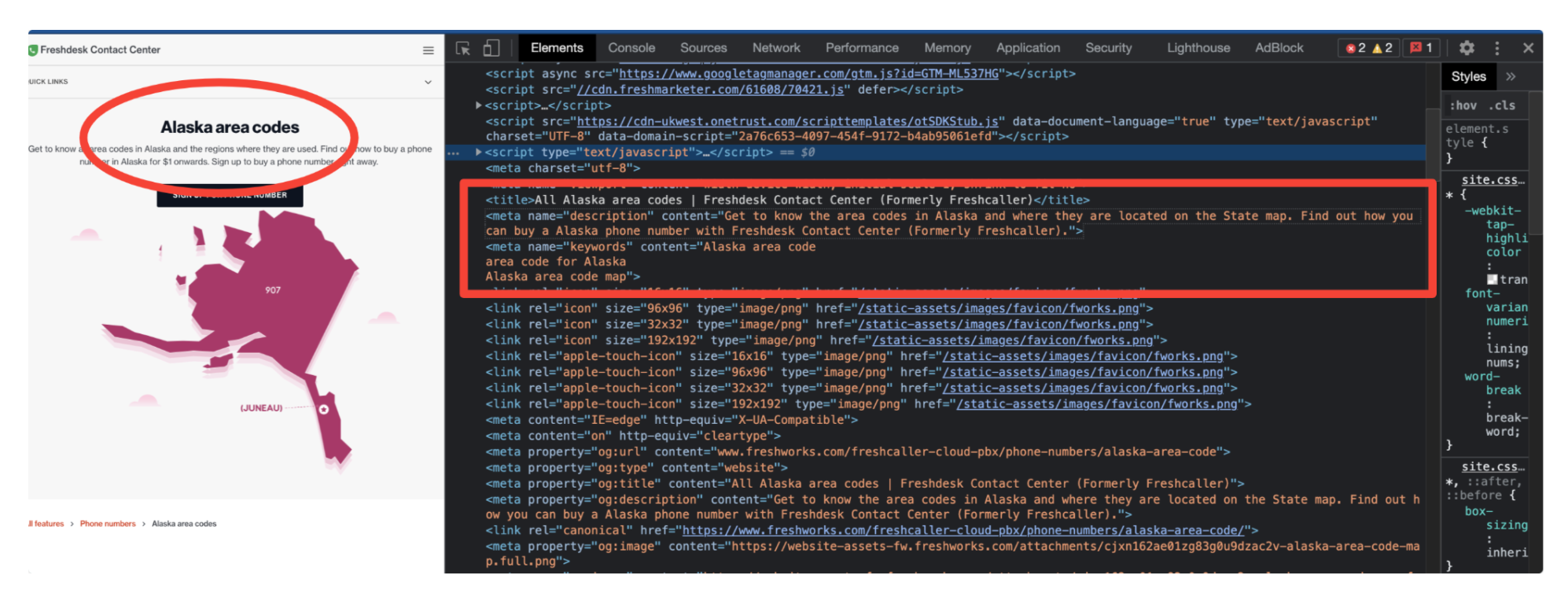

As for pages that target cities, Freshworks has templatized them as well, and here is what it looks like:


Here is what the page that targets the city of Boston looks like:


Why did Freshworks spend so much energy making these templates?
Think about it. Would you rather build 100s of pages on your site manually or automate them?
In fact, when you create templates for your subdirectories, you can build thousands of pages at scale. All you need to do is change variables like keywords. Ta-dah, you have a new page running.
When you’re preparing for an IPO or a site-wide restructuring, you can create hundreds of pages in a matter of days instead of months.
Another brand that uses this strategy perfectly is Shopify. Shopify has a tool, the Business Name Generator, whose landing page has 200+ subdirectories and attracts over $6 million worth of traffic.
Each of their 200+ subdirectories follows a very simple template that allows them to target 1,000s of long-tail keywords and spin up new landing pages in a few hours.
How Freshworks Converts Visitors With A 21-Day Trial
Freshworks is an umbrella company for a collection of customer service apps, and for a company of this size, the sales cycle and onboarding can take longer than usual. That long conversion window can have a considerable impact on the conversion rate.
So Freshworks uses different strategies to dominate their competitors both on the SERP and in the onboarding process.
The conversion strategy Freshworks uses with Freshdesk Contact Center is simple yet super-effective. Earlier, I mentioned that Freshworks effectively aligns the Contact Center sub-pages and landing page with the relevant keywords.
This means that visitors are immediately routed to the Fresh Caller landing page instead of the root domain, Freshworks.
Once you’re on the Freshdesk Contact Center landing page, a straightforward CTA gets you signed up with the software. All it takes is for you to hit the sign-up button and land on the next page.
You’ll fill out some essential business information that Freshworks needs to onboard you and your team (maybe), and you’re all set.


The beauty of this process is that Freshworks doesn’t require users to sign up with their credit card at the start. You can’t commit to using the software without first completing its 21-day free trial. Each user starts using the software with a free trial. There is no other option.
Conversely, competitors like Nextiva and RingCentral focus on onboarding users with their credit cards. This is evident by their landing page messaging.
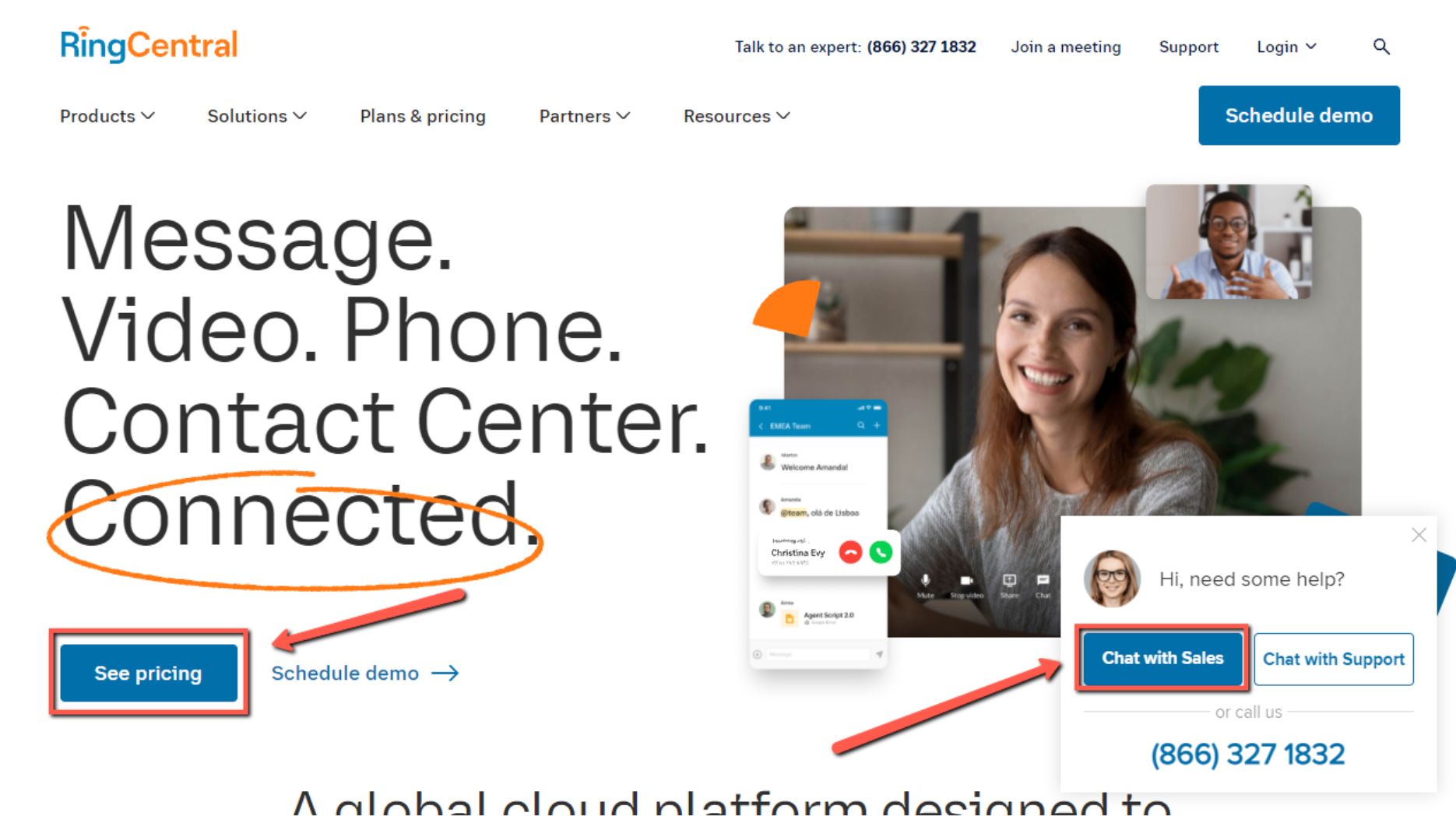

It’s also relevant to note that they gate a good deal of their software’s functionalities behind various plans, and it’s all based on the number of users. This is what the RingCentral phone system onboarding page looks like:
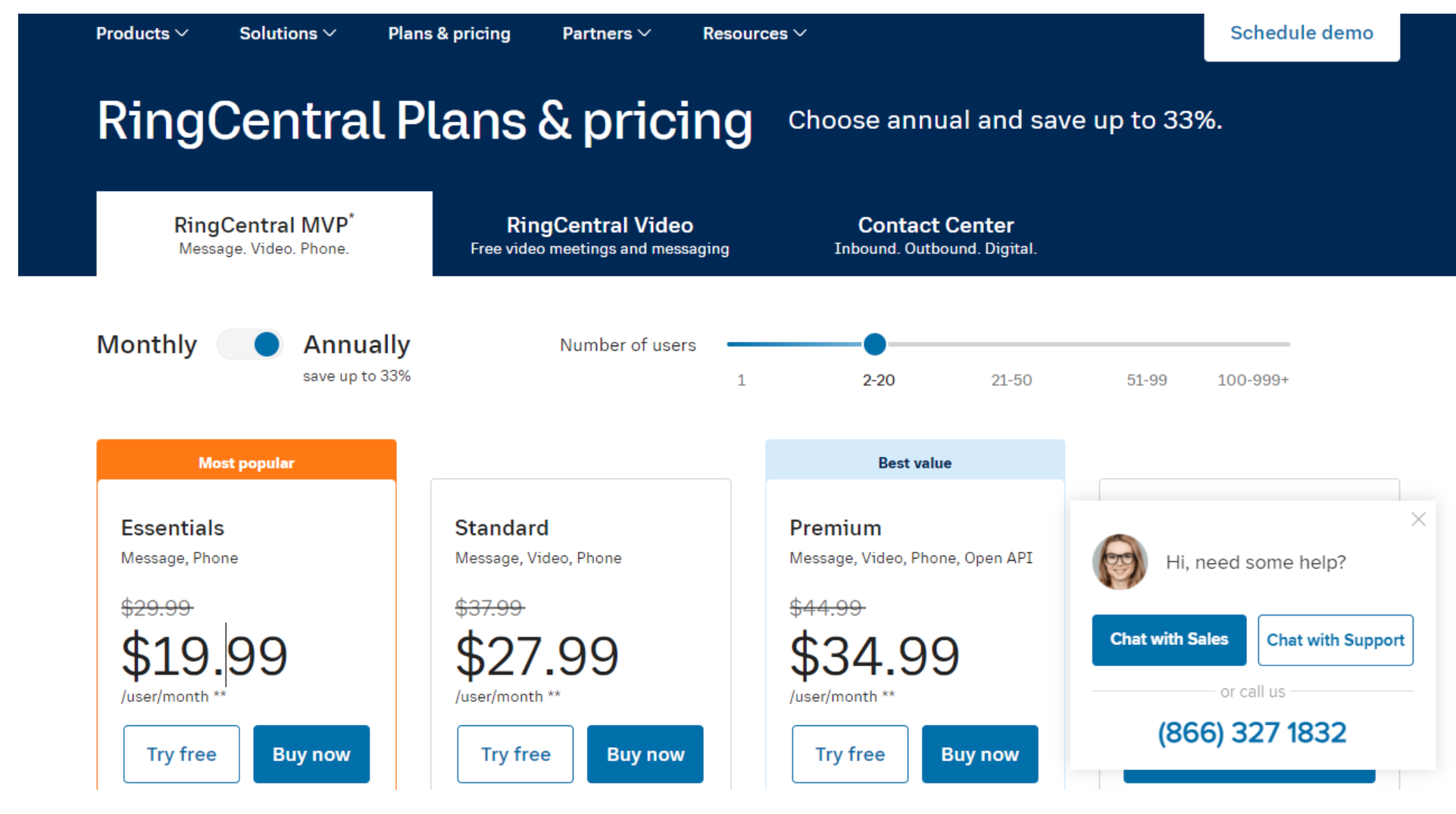

And here is how you get started with Nextiva:


But that’s not all; they also have a much longer onboarding process–a Four-step process, to be precise.
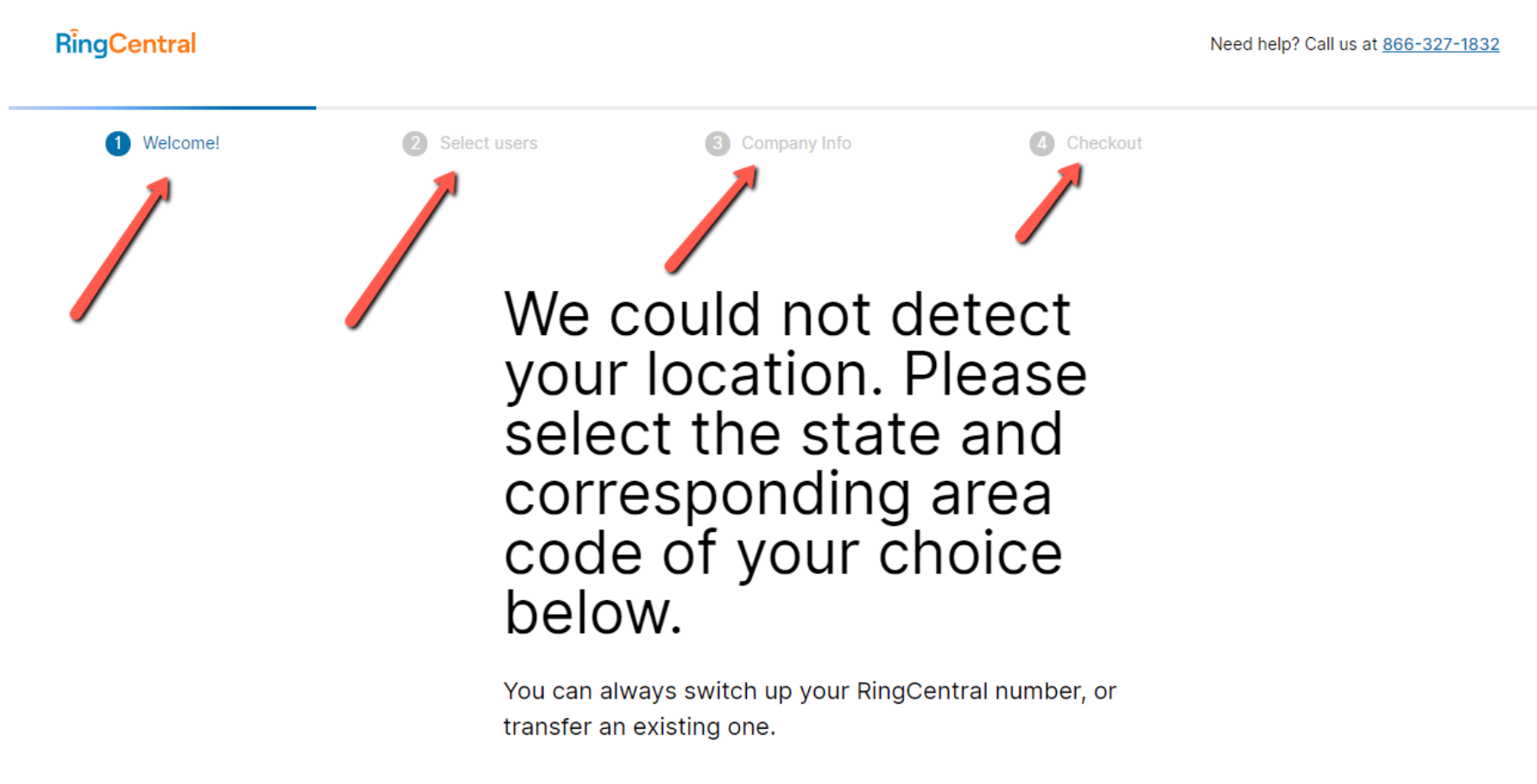

Freshworks wins with their 21-day free trial that doesn’t limit their service, and their two-step onboarding process. Also, to lessen the hassle for first-time users, they’ve created a quick explanatory video that walks users through the software.
First, they offer a quick onboarding process and allow you to take full advantage of the software during your first 21 days. Then you can commit to a plan that works for you, not before. And after you’ve signed up, you’re offered a quick video to get you up and running. How awesome is that?
Wrap-up
History will record that Freshworks succeeded in making a name for itself and a leading position in a world where it was an underdog with little to no chance of making it. The CRM and SaaS world is a really tough market. Here is what we can learn from Freshworks’ success.
Clarity Is a Smart SEO Tactic
This is one of the most prominent lessons we can learn from Freshworks. If you condense a lot of information into one landing page, Google and your audience will have a hard time understanding it.
Freshworks offers a myriad of CRM solutions, but they only started seeing activity on their website after they created pages for each of their features and services.
This allowed them to better explain to Google and visitors the structure of their website and business.
A Well-Structured Website Works Like an Integrated Machine
When your website is well structured, all its pages and SEO elements work together.
A backlink given to a child page has an equally positive effect on the parent page. As we’ve noted, a single page can have more than 100 subdirectories and benefit from the compound effect of the SEO results for each page.
Keyword Stuffing Tells Google You’re Competing with Yourself
When you don’t put clarity into your website architecture and optimize each of your landing pages with relevant keywords, search engines think that these pages compete.
By creating a parent-child relationship between your landing pages and their subdirectories, you are telling Google that your pages are not competing with each other.
As a result, Google’s crawlers understand the structure of your website and keep the main landing page in their best books, and rank for relevant keywords.
Simple Beats Complex When It Comes to Conversion
This is part of the reason why Freshworks is leaving many competitors behind.
A complicated onboarding process can be a sign of non-user-friendly software. Imagine you want people to use and enjoy your software, and they can’t get past your onboarding process.
Companies the size of Freshworks are notorious for their bureaucratic processes, but the Indo-American company breaks this stereotype.
Stay up to date with all of our latest findings by subscribing to our newsletter today. Signing up also gives you early access to Ross’ Tuesday essay full of exclusive industry insights.
Quick, do it now before the next drop!








